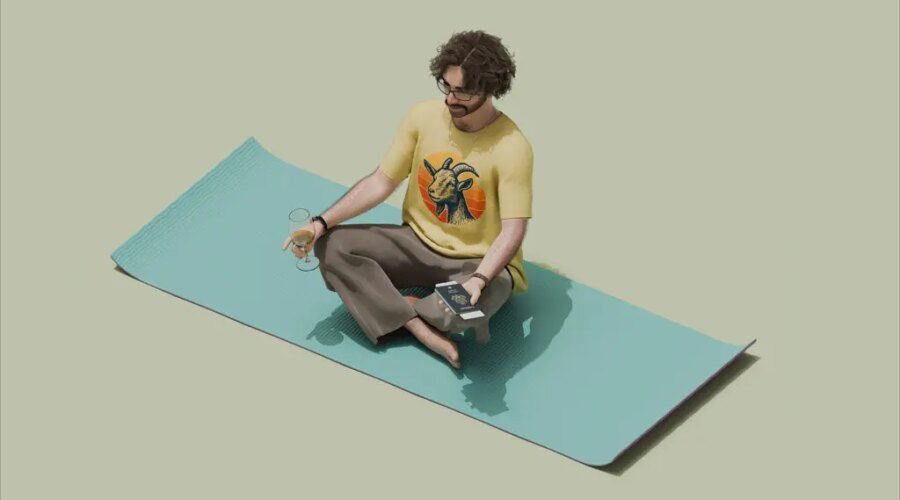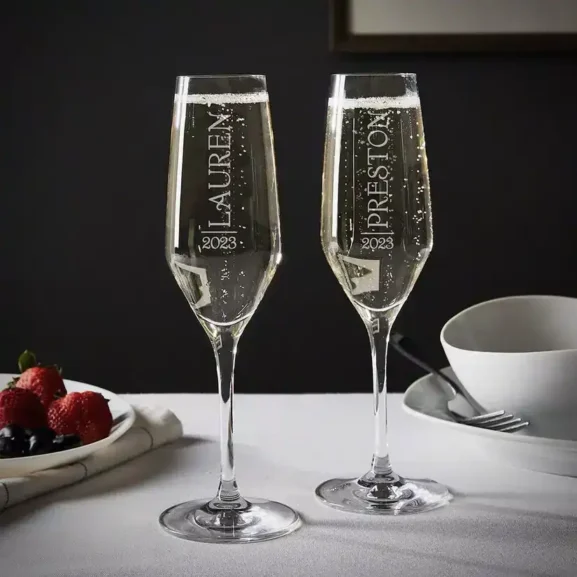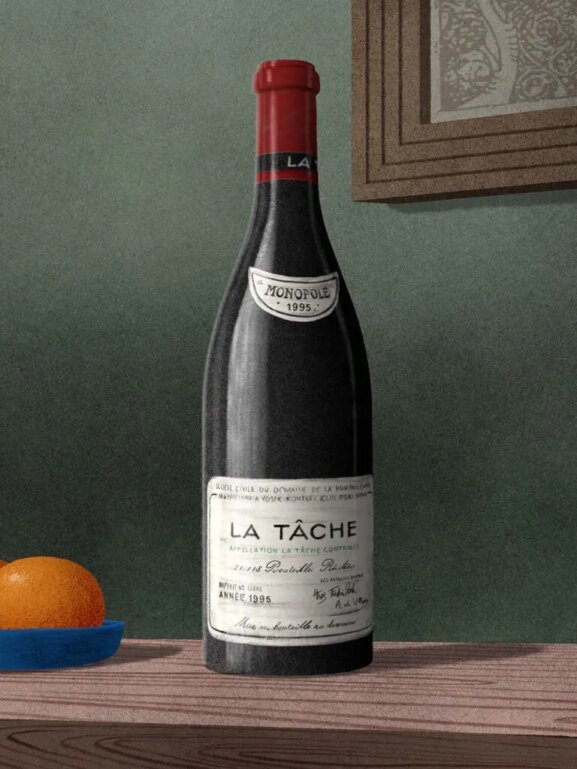American Tasting Rooms Are in Trouble. Will Tourists Ever Return?
As the tourism season approached this spring, American winery owners prepared. They shined the glasses, set up the tasting room, hooked up the Coravin, and waited for visitors to stop in.
After several years of Covid-induced fluctuation in visitors, the 2024 and 2025 seasons would mark a return to normalcy, experts predicted.
“We believe reduced visitation is an aberration,” says Rob McMillan in the 2023 SiliconValley Bank (SVB) report. “It’s an echo of Covid. People are catching up on delayed celebrations and travel, and passing by Wine Country. In 2024, we’re betting tasting room traffic returns.”
It did not.
// Create the element
var script_68efe77f218c5 = document.createElement(“script”);
script_68efe77f218c5.innerHTML = `
window.googletag = window.googletag || {cmd: []};
googletag.cmd.push(function() {
var adType = “leaderboard”;
var mapping;
var lbmapping = googletag.sizeMapping()
.addSize([1024, 0], [[970, 250], [970, 90], [1, 1], [728, 90]])
.addSize([728, 0], [[728, 90], [1, 1]])
.addSize([320, 0], [[1, 1], [300, 50], [300, 100], [320, 50], [320, 100]])
.addSize([0, 0], [[1, 1], [320, 50]])
.build();; // Size mapping for leaderboard ads
var medrecmapping = googletag.sizeMapping()
.addSize([1024, 0], [[300, 600],[300, 250]])
.addSize([728, 0], [300, 250])
.addSize([320, 0], [[1, 1],[300, 250]])
.addSize([0, 0], [[1, 1], [300, 250]])
.build(); // Size mapping for med rectengle ads
if(‘/39808611/article_page/article_leaderboard_1’ == ‘/39808611/article_page/article_leaderboard_1’
|| ‘/39808611/article_page/article_leaderboard_1’ == ‘/39808611/article_page/article_leaderboard_2’
|| ‘/39808611/article_page/article_leaderboard_1’ == ‘/39808611/article_page/article_leaderboard_3’) {
mapping = googletag.sizeMapping()
.addSize([1920, 0], [[728, 90]]) // >= 1920px
.addSize([1440, 0], [[728, 90]]) // 1440px-1919px
.addSize([730, 0], [[300, 250]]) // 730px-1439px
.addSize([0, 0], [[320, 100], [320, 50], [300, 100], [300, 50], [300, 250]]) // Up to 729px
.build();
} else {
mapping = adType == ‘leaderboard’ ? lbmapping : medrecmapping;
}
googletag.defineSlot(‘/39808611/article_page/article_leaderboard_1’, [],
‘div-gpt-ad-68efe77f218c5’).addService(googletag.pubads()).defineSizeMapping(mapping);
googletag.pubads().enableSingleRequest();
googletag.pubads().collapseEmptyDivs();
googletag.display(‘div-gpt-ad-68efe77f218c5’);
});
`;
// Append the script to the body
document.body.appendChild(script_68efe77f218c5);
Footfall in American wine regions fell by 5.1% in 2024, according to the Silicon Valley Bank (SVB). Grape & Wine Magazine cited a 15% decline in international visitors. Even in regions where tourism is rising—Napa visitations rose 15.9% in the last year—these numbers haven’t returned to pre-pandemic levels. SVB now expects these downturns to continue through 2026, as producers adapt to changing consumer preferences.
“Gone are the days of jam-packed tasting rooms with guests four rows deep from the bar,” says Sherri Fenton, owner of Michigan’s Black Star Farms.
Wineries are feeling the heat. Over the last year, brands like Silver Oak, Trinchero, and Duckhorn have shuttered major tasting rooms. They’ve attributed consolidation of brands, oversupply, and slow foot traffic as the cause.
Winery owners are now asking: when—and why—did wine country become a hard sell?
The problems have been decades in the making.
Where Have All the Tourists Gone?
The wine industry in general is facing a wide range of setbacks. Health concerns around alcohol are swirling. Oversupply is growing. Young drinkers aren’t latching. And tariffs are raising the prices of everything.
“I think it’s a combination of things,” says Brittany Gibson, executive director of the Seneca Lake Wine Trail. “High cost of living, leaving less disposable income to spend on trips and wine, and consumers turning away from wine for a variety of reasons.”
The price to visit wine country has also been creeping up steadily for years. Recent SVB reports have found that visitors are being deterred by the extortionate costs of traveling and tasting.
Tasting room fees have increased more than 200% since 2012. And have more than doubled in just the past six years. In 2019, the average cost of a tasting in the Napa Valley was $30.50. Now, a standard tasting in the Napa Valley averages $81, while reserve tastings typically run $128.
These steadily increasing prices extend to every aspect of a trip. For example, the average hotel room in Napa Valley costs $412 per night—$682 for Yountville—double that of already pricey-to-visit San Francisco. Luxury properties like Stanly Ranch and Carneros Resort & Spa regularly command over $1,000 per night.
In 2012, the average hotel room in the valley was a reasonable $279.
Throw in food, transportation, and other vacation expenses, and visiting wine country can quickly feel like a millionaire’s errand. Why not book a flight to Europe if a wine trip is going to cost thousands of dollars anyway?
The Draw of the Tuscan Sun
“We believe the perceived dip in foot traffic may be linked to the surge in international travel, especially to destinations like Europe,” says Sandra DeMaria, the director of sales and marketing at Napa Valley’s Ehlers Estate. “There’s a strong post-pandemic pull toward ‘bucket list’ experiences abroad—everyone was in Italy this summer.”
The travel is enticing, but so is the cost. The average cost of an Italian wine tasting is €20—significantly lower than its California counterpart. Why be in Bottle Shock when you can star in Under the Tuscan Sun for the same price?
“The downturn lies in costs and limitations,” says Michael Pope, who runs Vine Travel, a Spain-based boutique wine tour company whose trips go for €200 to €300 a person for a two- to three-day tour.
This signals a big difference in the approach to wine tourism in the U.S. versus E.U. Decades ago, tasting fees were less important to a winery’s business plan. Bottle sales and memberships are what mattered most. But the formula has shifted as more formal tasting experiences became trendier.
// Create the element
var script_68efe77f21f2d = document.createElement(“script”);
script_68efe77f21f2d.innerHTML = `
window.googletag = window.googletag || {cmd: []};
googletag.cmd.push(function() {
var adType = “leaderboard”;
var mapping;
var lbmapping = googletag.sizeMapping()
.addSize([1024, 0], [[970, 250], [970, 90], [1, 1], [728, 90]])
.addSize([728, 0], [[728, 90], [1, 1]])
.addSize([320, 0], [[1, 1], [300, 50], [300, 100], [320, 50], [320, 100]])
.addSize([0, 0], [[1, 1], [320, 50]])
.build();; // Size mapping for leaderboard ads
var medrecmapping = googletag.sizeMapping()
.addSize([1024, 0], [[300, 600],[300, 250]])
.addSize([728, 0], [300, 250])
.addSize([320, 0], [[1, 1],[300, 250]])
.addSize([0, 0], [[1, 1], [300, 250]])
.build(); // Size mapping for med rectengle ads
if(‘/39808611/article_page/article_leaderboard_2’ == ‘/39808611/article_page/article_leaderboard_1’
|| ‘/39808611/article_page/article_leaderboard_2’ == ‘/39808611/article_page/article_leaderboard_2’
|| ‘/39808611/article_page/article_leaderboard_2’ == ‘/39808611/article_page/article_leaderboard_3’) {
mapping = googletag.sizeMapping()
.addSize([1920, 0], [[728, 90]]) // >= 1920px
.addSize([1440, 0], [[728, 90]]) // 1440px-1919px
.addSize([730, 0], [[300, 250]]) // 730px-1439px
.addSize([0, 0], [[320, 100], [320, 50], [300, 100], [300, 50], [300, 250]]) // Up to 729px
.build();
} else {
mapping = adType == ‘leaderboard’ ? lbmapping : medrecmapping;
}
googletag.defineSlot(‘/39808611/article_page/article_leaderboard_2’, [],
‘div-gpt-ad-68efe77f21f2d’).addService(googletag.pubads()).defineSizeMapping(mapping);
googletag.pubads().enableSingleRequest();
googletag.pubads().collapseEmptyDivs();
googletag.display(‘div-gpt-ad-68efe77f21f2d’);
});
`;
// Append the script to the body
document.body.appendChild(script_68efe77f21f2d);
“Visiting an American tasting room is not the same experience as we offer here in Spain: an invitation into the winery, a walk through the vineyard, and often a tasting with the winemaker,” says Pope. “People feel part of what’s happening there, and when you add generous pours, everyone is happy.”
Since launching in March, Cork + Compass, Wine Enthusiast’s wine tourism company, has been consistently selling out its luxe international trips to places like Tuscany and Burgundy. Led by in-house experts, the trips feature visits to wineries and restaurants that have been vetted by the Wine Enthusiast Tasting Panel.
“Travel has always been part of the wine world,” says Jacqueline Strum, president of Wine Enthusiast Media. “Travelers want to be guided by knowledgeable specialists they trust, and are seeking hidden discoveries and experiencing a deeper connection to a sense of place.”
So, it’s not that travelers are unwilling to spend money on wine trips. Rather, it seems they want the experience to feel worth the funds.
“When you consider the current cost of domestic travel, it’s not surprising that many are choosing to redirect their spending toward global adventures that offer a change of pace, especially considering the politically and socially charged atmosphere at home,” says DeMaria.
The Price of Politics
The lack of tourists to U.S. wine regions is not just about Americans wanting to escape. International travelers are avoiding the States due to the current administration’s hardline immigration stance.
Canadian visitation to the United States—which is typically the top source of international travelers to the country—dropped 32.4% year over year. This stark decrease has been partly fueled by the weak Canadian dollar (currently around $1.35 CAD for every $1 USD) but much of it is due to political uncertainty and an intense patriotic response to President Trump’s tariffs, policies, and statements.
These drops, however, extend far beyond our neighbors to the north. The U.S. Travel Association found that in March, international travel to the U.S. fell 14% compared with the same period last year.
Geopolitical tensions surrounding tariffs and the recent change in power are impacting the wine tourism industry, as international travelers are apprehensive about visiting the United States,” says Jackie Mondelli, chief marketing officer of travel insurance provider SquareMouth Inc.
For example, California—the largest wine tourism state in the nation—is anticipating a 9.2% decline in international visitors in 2025.
Already by March, the Golden State had logged an 11% decline in international visitors, compared to the previous year. In Napa, data from Community Benchmark found a 3.1% decline in visitors over the first quarter of the year.
But wine regions all across the country are taking a hit. “We’ve seen a huge decline in Canadian and European travelers,” says Brittany Gibson, executive director of the Seneca Lake Wine Trail. “Canadians have launched campaigns to stay home, so they’re visiting Canadian wineries instead.”
It seems Americans, too, are jumping on the Canadian winery bandwagon. “We’ve seen a huge uptick of Americans compared to last summer,” says Jakub Lipinski, head of operations at Big Head Wines in Niagara, Canada. “And larger groups from there. Several have apologized over the [political] hubbub.”
Meanwhile, Italy is gearing up to break its tourism records. And Future Market Insights notes Europe, India, and China are all seeing huge wine tourism booms.
Bringing Tasting Rooms to the Big City
While these numbers are jarring, they don’t accurately paint a full picture of what’s going on.
There are bright spots: tiny wineries (producing fewer than 1,000 cases) saw a visitor increase of over 14% compared to 2023, while wineries producing over 500,000 cases saw an average decline of 16%.
Small producers are using these jumps to their advantage, opening tiny, intentional, often urban tasting rooms of their own.
Micro-winery Decemil has a brand-new tasting room in downtown Paso Robles. Martha Stoumen just opened a brick-and-mortar bar in Healdsburg. It’s open late and doubles as a store for provisions made by like-minded makers. She dreams it will serve as a hub for women entrepreneurs to hang, and connect. “Third spaces are so important,” Stoumen says.
Is opening a tasting room crazy in the current wine environment?
Maybe, but producers argue these hybrid urban tasting rooms—part bar, part tasting space—are places to deepen connections with existing consumers and introduce new drinkers to the brand in a setting where they have control over the messaging. These places are casual with the goal of drawing in drinkers who value memories banked, not wines tasted.
This is why Big Basin welcomes visitors to its tasting room in the Santa Cruz Mountains as well as its urban tasting space-slash-tapas bar in Santa Cruz proper.
Sonja Magdevski of Clementine Carter opened a tasting room that feels more like a bar in the tiny town of Los Alamos in California’s Santa Ynez Valley, and shares a kitchen with the beer emporium next door to keep people satiated. Pours of Magdevski’s wines are available, along with Champagne and craft beer.
Turning the Tables on Traditional Tastings
Clementine Carter is far from the only tasting room flipping the script on the traditional model. Like the Los Alamos spot, a wide array of wineries are foregoing the required reservations or rethinking the customary one-ounce flights to offer wine tourists the experience- and emotional-driven moments they’re seeking.
“Visitors are more intentional now,” says Fenton. “Rooted in local experiences.”
That’s why Black Star Farms now hosts goat yoga and happy hour with their on-farm goats, and offers snowshoers hot soup and mulled wine. It’s making a big difference. Goat yoga, for instance, increased visits by 20%. “One of the biggest benefits is that it has people talking,” says owner Sherri Fenton.
Lakeside Cellars in the Okanagan Valley offers vineyard yoga (no goats included). Madson Wines’ urban tasting room in Santa Cruz has surfboard swaps, where guests can trade boards over glasses of Chardonnay. Balletto Vineyards hosts baseball games in its vineyard field. Benziger Family Winery takes guests biodynamic tractor tours through its Sonoma Mountain Estate. “We saw overall guest traffic rise by more than 10% in 2025, even as visitation at the average winery in Sonoma Valley is down 6%,” says Hilary Clair, the winery’s tasting room manager.
The takeaway: there are bright spots in wine tourism. While these unique experiences definitely seem to be working, wineries are also gaining foot traffic by catering to both neophytes and connoisseur types.
Virginia’s Early Mountain Vineyards, for instance, has vetoed reservations and kept more casual experiences—like tastings in the meadow—to draw in new customers, or those who need a more accessible entryway to wine. But they’re still keeping their keen bigger spenders close. “We revamped our most elevated wine tasting to provide more educational content and also launched a seven-course chef’s table experience, which has been quite popular,” says president Jon Ruel.
Michigan’s Chateau Chantal has followed a similar path with a wide range of offerings that cater to a similarly wide range of guests. Non-alcoholic wine and mocktails have been added to the lineup to broaden its potential customer base, and the team is going all in on activities.
“Experiences are the way forward for us,” says the winery’s president and CEO Marie-Chantal Dalese. “We’ve always paired culinary events such as cooking classes and wine dinners with our wines, but have added events like stargazing and lower-priced bistro dinners to the mix, in addition to increased music evenings and holiday-themed events.”
A lot of these initiatives reflect a broader philosophical shift—wineries are no longer only advertising wine. They’re offering connection and experiences. “You might not be here to drink wine, but here to experience the glorious agricultural community and try a new experience,” says Dalese.
More Industry News Coverage
- Japan’s rigid brewing law is fueling the U.S. sake boom.
- Not having a written wine list is trendy—and a bad idea.
- Tariffs have transformed the wine world as we know it.
- Chinese wine is on the rise in America—tariffs be damned.
- It’s officially time to stop criticizing Gen Z’s drinking habits.

In the Shop
For Wine On-the-Go
This versatile messenger-style wine bag comes with removable bottle liners, a corkscrew and an aerator.
The post American Tasting Rooms Are in Trouble. Will Tourists Ever Return? appeared first on Wine Enthusiast.


